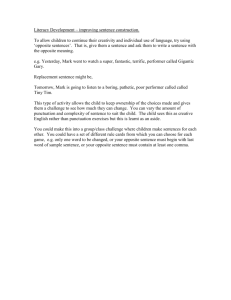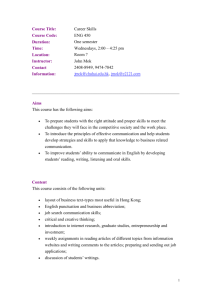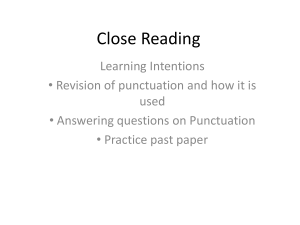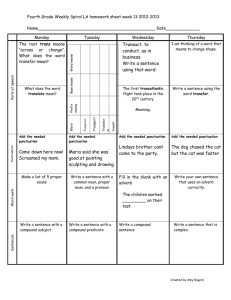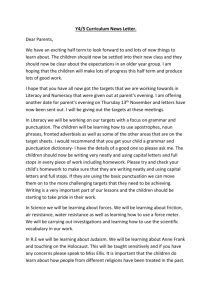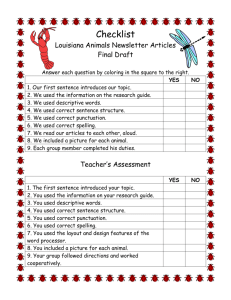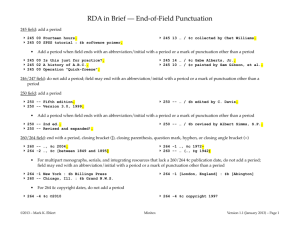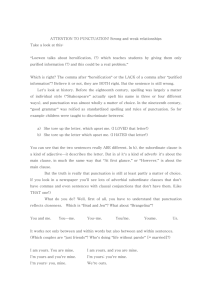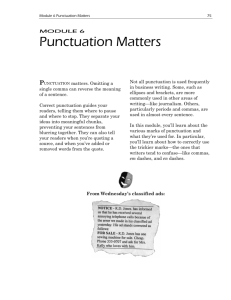Capital letters and punctuation
advertisement
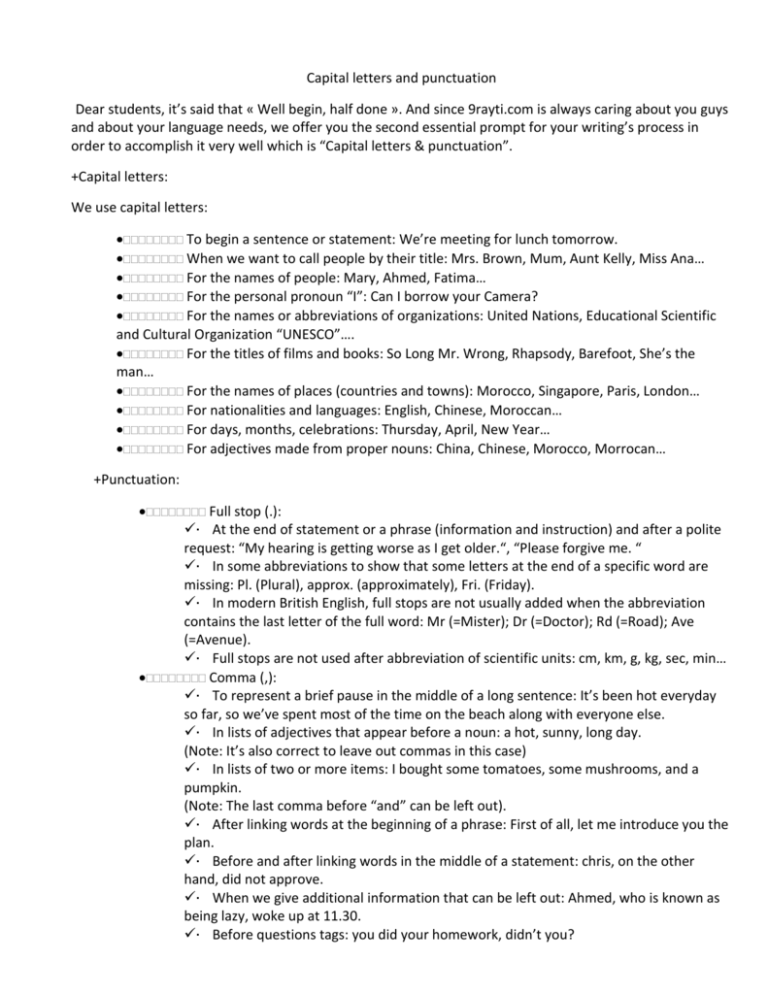
Capital letters and punctuation Dear students, it’s said that « Well begin, half done ». And since 9rayti.com is always caring about you guys and about your language needs, we offer you the second essential prompt for your writing’s process in order to accomplish it very well which is “Capital letters & punctuation”. +Capital letters: We use capital letters: To begin a sentence or statement: We’re meeting for lunch tomorrow. When we want to call people by their title: Mrs. Brown, Mum, Aunt Kelly, Miss Ana… For the names of people: Mary, Ahmed, Fatima… For the personal pronoun “I”: Can I borrow your Camera? For the names or abbreviations of organizations: United Nations, Educational Scientific and Cultural Organization “UNESCO”…. For the titles of films and books: So Long Mr. Wrong, Rhapsody, Barefoot, She’s the man… For the names of places (countries and towns): Morocco, Singapore, Paris, London… For nationalities and languages: English, Chinese, Moroccan… For days, months, celebrations: Thursday, April, New Year… For adjectives made from proper nouns: China, Chinese, Morocco, Morrocan… +Punctuation: Full stop (.): At the end of statement or a phrase (information and instruction) and after a polite request: “My hearing is getting worse as I get older.“, “Please forgive me. “ In some abbreviations to show that some letters at the end of a specific word are missing: Pl. (Plural), approx. (approximately), Fri. (Friday). In modern British English, full stops are not usually added when the abbreviation contains the last letter of the full word: Mr (=Mister); Dr (=Doctor); Rd (=Road); Ave (=Avenue). Full stops are not used after abbreviation of scientific units: cm, km, g, kg, sec, min… Comma (,): To represent a brief pause in the middle of a long sentence: It’s been hot everyday so far, so we’ve spent most of the time on the beach along with everyone else. In lists of adjectives that appear before a noun: a hot, sunny, long day. (Note: It’s also correct to leave out commas in this case) In lists of two or more items: I bought some tomatoes, some mushrooms, and a pumpkin. (Note: The last comma before “and” can be left out). After linking words at the beginning of a phrase: First of all, let me introduce you the plan. Before and after linking words in the middle of a statement: chris, on the other hand, did not approve. When we give additional information that can be left out: Ahmed, who is known as being lazy, woke up at 11.30. Before questions tags: you did your homework, didn’t you? To separate the speaker from the words spoken: Kelly said, “I’ll be right back.” In large numbers to separate sets of digits: 2.300 18.700 450.060 5.000.000 Semicolon (;): To join two sentences with related meanings together: We need better technology; better technology costs money. To separate long items in a list: Students are asked not to leave bicycles by the entrance; not to eat chewing gum in the classroom; and not to be late for school. Colon (:) : To represent an explanation of the previous part of the sentence: At the end, we had to stop: we were tired and it was very dark. To introduce items in a list: We ask you to provide us one of the following pieces of identification: a passport, a student’s card and a driving licence. To give examples in the middle of a sentence. Quotation marks (“ ”): Around direct speech: “what time is it?” Susie asked Around words you want to emphasize or treat: what is “Globalization”? Question mark (?): After a question: How are you? Exclamation mark (!): To express strong emotions like joy, anger and surprise: you will not believe it! I get my driving licence! With commands that should be obeyed: Stop laughing! With short exclamations called interjections: Help! Ouch! Apostrophe (‘): With an‘s’ to show who or what someone or something belongs to or is connected with: Chris is having dinner with Kelly’s sister. To show that some letters are missing (contractions or short forms): I can’t (cannot) believe you anymore, you’re (you are) so exciting! Those explanations will definitely help you to structure and build your writing in a more organized way. In conclusion dear 9rayti’s community, you have to know that Capital letters and punctuation are necessary in any essay or text. Besides, they have their special mark!!!


